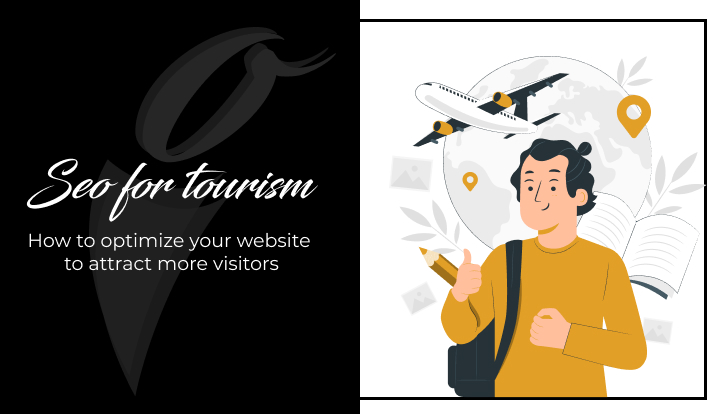SEO for tourism: How to optimize your website to attract more visitors

In today’s digital world, online presence is essential for the success of any company dedicated to tourism. SEO for tourism is a vital strategy to attract more visitors to your website and convert them into customers. In this article, we will guide you in understanding SEO for tourism and its application to boost the digital presence of your business in the tourism sector.
Table of Contents
What is SEO for tourism?
SEO (Search Engine Optimization) is the process of optimizing a website to improve its ranking on search engines like Google. In the tourism sector, SEO involves a series of specific techniques and strategies to ensure that your website appears in the top search results when users search for information related to travel, destinations, accommodations, and tourism activities.
Importance of SEO in the tourism sector
Increasing visibility and traffic
The main objective of SEO for tourism is to increase the visibility of your website in search engines. The higher you appear in search results, the more likely you are to attract visitors to your site. Since most users do not go beyond the first page of results, being at the top of the search results is essential.
Competition in the tourism market
The tourism industry is highly competitive. Every day, thousands of travel agency, hotel, and destination websites compete for travelers’ attention. A well-implemented SEO strategy will give you a competitive edge, helping you stand out from the crowd and attract more potential customers.
Key SEO strategies for tourism
Keyword research
Identifying relevant keywords
The first step in any SEO strategy is keyword research. Use tools such as Google Keyword Planner, SEMrush or Ahrefs to identify the keywords travelers use when searching for information about tourism destinations, hotels, activities, and other tourism-related services.
Search intent analysis
Understanding the intent behind keywords is crucial. Keywords can have different intentions, such as seeking information (informational), making a purchase (transactional), or navigating to a specific site (navigational). For example, “best travel destinations in 2024” has an informational intent, while “book hotel in Rome” is transactional.
On-Page Optimization
Creating quality content
Content is king in SEO. Create valuable, informative and engaging content that answers your users’ questions and needs. Include detailed destination descriptions, travel guides, itineraries, and useful tips. Use variations of your main keywords naturally in your content.
Use effective titles and meta descriptions
Titles and meta descriptions are crucial for attracting users to your website. Make sure each page has a unique title and an attractive meta description that includes your main keywords. This not only improves your SEO, but also increases your click-through rate (CTR).
Image Optimization
Images are a vital part of tourism websites. Optimize your images by using descriptive file names and alt tags that include relevant keywords. This not only improves the accessibility of your site, but can also help your images appear in Google image searches.
Link building strategies
Getting quality backlinks
Backlinks, or inbound links, are one of the most important factors in SEO. Get quality links from relevant and authoritative websites in the travel industry. This can include collaborations with travel blogs, guest articles, and travel directories.
Essential premises that a tourism website should contain:
- Attractive and high quality visual content
- Professional photographs and videos showing destinations and experiences.
- Detailed and accurate information
- Complete descriptions of destinations, activities, accommodations and services.
- Responsive design and intuitive navigation
- Mobile device compatibility and user-friendly site structure.
- Secure online booking and payment system
- Reliable and easy to use booking and payment platform.
- Customer testimonials and reviews
- Verified reviews from previous customers to build trust.
- Verified reviews from previous customers to build trust.
- SEO optimization
- Use of relevant keywords, meta descriptions and alt tags on images.
- Clear contact information
- Easily accessible contact details, including phone, email and contact forms.
- Social media integration
- Links to social media profiles and content sharing buttons.
- Interactive map
- Map with location of destinations, offices and points of interest.
- Travel blog
- Regular posts on travel tips, destinations and industry news.
These premises are fundamental to ensure that a tourism website is attractive, functional and effective in attracting and retaining visitors, as well as converting visits into bookings.
Conclusion
SEO for tourism is a powerful tool to increase the visibility of your website and attract more visitors. By implementing an effective SEO strategy, you can stand out in a competitive market and convert more users into customers. Remember that SEO is an ongoing process that requires constant analysis and adjustments, but over time, the results can be significant.